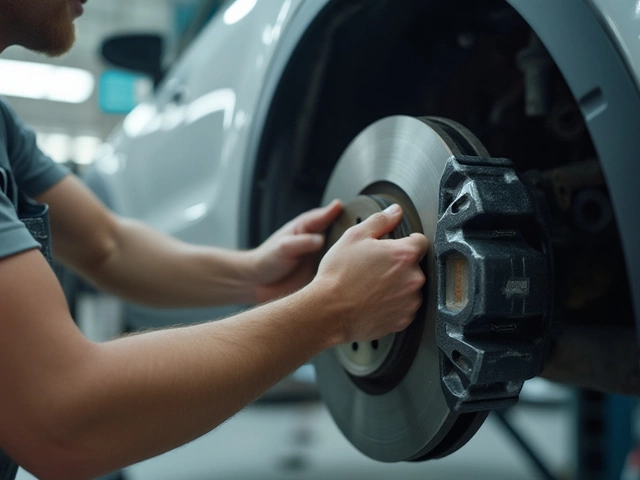Everyone thinks about changing engine oil, rotating tires, or swapping brake pads, but hardly anyone argues heatedly about the air filter’s MERV rating. And yet, this little acronym could quietly make a difference to your car’s health—and yours. Most people don’t realise just how much the particle-trapping power of your air filter changes how you breathe inside your car, how hard your HVAC system has to work, and even how pollen and bacteria spread on your daily commute. Mess this up and you’ll either be breathing in all the Manchester particulates, or suffocating your system with a filter that’s trying way too hard.
What’s a MERV Rating and Why Should Car Owners Care?
MERV stands for Minimum Efficiency Reporting Value. It’s a scale from 1 to 20 telling you how good a filter is at snatching up particles from the air. The higher the number, the tinier the bits it traps. In everyday terms, a low MERV filter catches big, obvious dust particles. A high-MERV filter becomes a microscopic bouncer, blocking smoke, bacteria, and even smog.
Why does this matter in your car? Well, most vehicles in the UK simply drive through high pollution zones regularly—especially if you’re inching down Deansgate during peak hours. Air quality in cars can be up to 15 times worse than on city pavements, according to DEFRA’s 2023 study. The kind of filter you choose, and its MERV rating, changes whether you’re protected from PM2.5, pollen, and exhaust soot or if those things sneak past and settle on your dashboard, in your lungs, and on your car’s air sensors.
There’s a catch, though: car cabins and engines aren’t designed exactly like buildings. Manufacturers usually recommend a range—typically MERV 6 to 12 for cabin air filters. Go lower, and you might as well leave the windows down on a dusty day. Go too high, and your blower motor (or AC system) could start straining, because high-MERV filters can restrict airflow. The sweet spot… Well, it depends on your priorities: allergy protection, air flow, or just following factory specs?
True story: in a 2024 UK university experiment involving 150 commuters in electric cars, researchers tried swapping OEM filters for MERV 13 HEPA types and tracked symptom changes. Those with allergies saw a 40% drop in sneezing fits and throat irritation after a week. On the flip side, a handful of drivers found their windscreen would fog up more easily because the blower just couldn’t push as much air.
Decoding the Numbers: How Different MERV Ratings Affect Your Ride
Let’s break down what you can expect, practically, from each rating—since “higher isn’t always better.”
| MERV Rating | Commonly Filters | Recommended For | Airflow Impact |
|---|---|---|---|
| 1-4 | Pollen, dust mites | Rarely used in modern vehicles | Minimal impact |
| 5-8 | Mould spores, pet dander | Standard OEM cabin and engine filters | Low |
| 9-12 | Lead dust, auto emissions, finer dust | Upgraded cabin filters | Moderate |
| 13-16 | Bacteria, smoke, sneeze particles | Allergy sufferers, cities with pollution | High |
If you’re doing mostly city driving and deal with allergies or asthma, a MERV 11 or MERV 12 can keep out most irritants without stifling the car’s airflow. A HEPA-grade, MERV 13 or above, gives hospital-level filtration—but only if your car’s HVAC can handle the extra resistance. The Toyota Prius, for example, allows upgrades to MERV 13, but Ford Focus fans might notice reduced air volume if they swap out factory filters for a high-MERV version.
Engine air filters are a whole different beast. Here, you want to stop sand, pollen, and bugs, but you never want to choke off airflow to your engine. An engine that can’t breathe gets less efficient, burns more fuel, and can even throw up error codes. Sticking to MERV 5-8 for the engine and MERV 8, 10, or even 12 for cabin air is usually the safest move, unless your car specifically supports higher filtration.
Double-check filter packaging—many companies list both their own “class” (like Bosch class N) and the equivalent MERV. Some filters, especially cheaper brands, just put ‘anti-allergy’ or ‘HEPA’ without tested specs. That label isn’t enough. Real HEPA in the automotive world usually means an actual MERV 13-16, but check the box for ISO 16890 or EN 779 certifications if you want the real deal.

Real-World Tips for Picking the Right MERV Rating
Here’s the dilemma: do you care more about breathing ultra-clean air, or about air flowing easily and your AC lasting longer? The answer depends on your car, your health, and whether you drive in dusty countryside or the middle of a city.
- Check your owner’s manual first. Car makers genuinely test air resistance, so their advice usually isn’t just to help spare parts profits.
- If you’re allergic to pollen, live in a city, or hate the smell of exhaust, go for the highest-matching MERV your car’s manual (or filter slot) allows—usually between 9 and 12 for most European and Japanese vehicles.
- Classic cars or high-performance engines usually need lower MERV for engine filters—breathability comes before filtration for engine health.
- For sensitive health issues (asthma, allergies), try an aftermarket HEPA or carbon-activated cabin filter—not just for the pollen rating but for odour absorption too.
- Don’t push it: doubling your MERV rating may sound clever, but test your fan power and windows for fogging after swapping. If your windscreen mists up more or you have weak airflow, that high-MERV filter is choking the system.
- Change filters on time. Even a perfect MERV 11 filter turns useless when it clogs up—manufacturers recommend swapping cabin filters anywhere from every 10,000 to 20,000 miles, but city drivers or pet owners should check more often.
- Watch for rips and cheap build quality in budget filters. If the filter tears, the MERV label becomes meaningless—a gap means dirty air skips straight through.
Want a quick hack? Take your old filter, tap it on a piece of white paper, and if a pile of black dust drops off, it’s way past time to swap. Smell sour air or spot visible stains? Change it. A healthy filter doesn’t just protect your nose; it also helps your car’s sensors, AC, and recirculation system work properly—and that affects your comfort on every drive.
Getting the Best Out of Your Filter: Things Dealers and Mechanics Rarely Tell You
Let’s get real: not all filters are created equal, even with the same MERV label. Some budget replacements use thinner pleats or less surface area, cutting cost but letting more particles through, or clogging up fast. Premium brands like Mann, Bosch, and Mahle test each batch for consistent results. Some even add an extra carbon layer—not for physics class fun, but because carbon absorbs smells and certain gases, not just particles.
Ever noticed your air con struggling after visiting an independent mechanic or buying a cheap filter online? A 2023 consumer report found that nearly 30% of cheap aftermarket ‘MERV 10’ filters actually performed closer to MERV 7 or 8. The problem, aside from the dust, is that fake ratings aren’t policed as closely as many think. So, buy reputable brands—even if it means paying £5 or £10 more per filter.
There’s also seasonality: in spring and autumn, pollen counts in Manchester spike. If you’re sensitive, try upgrading your filter just before these seasons. City drivers should lean towards higher MERV, while country dwellers facing mud, pollen, and dust might prefer balance.
And if you ever spilled coffee (or worse, fish and chips grease) near your passenger footwell, and the whiff won’t leave, swapping in a carbon cabin filter is a game changer. It won’t just catch particles; it sucks up odours far better than plain paper filters.
Mechanics don’t talk much about airflow. But if you feel weak fan speed after swapping filters, open your glovebox and remove the filter. If airflow jumps back massively, your filter is too dense or already blocked—try a slightly lower MERV value next time.
And don’t forget about the rain. Sometimes, ‘musty car smell’ after heavy rain isn’t just the Yorkshire wet—it’s a soggy, half-rotting filter. Nobody wants mould spores blown in their face. Always check if your model’s filter is easy to change yourself; many are hiding behind the glovebox and only take five minutes with a screwdriver.
Compare this: Old Vauxhall Astras need a basic rectangular £8 filter, while the latest BMWs use high-tech, layered HEPA-carbon filters costing £40 and up. Your budget matters, but don’t cheap out on air quality. Even a simple upgrade from MERV 5 to a decent MERV 8 can cut sneeze-inducing pollen by over 50% and extend the life of your air con. That’s worth the price of a few takeaways.
To wrap things up, there’s no magic number for everyone. But knowing the science behind MERV rating, and matching it to your car’s needs, your health, and Manchester’s ever-growing traffic, makes all the difference between stuffy, grimy air and a fresh cabin that feels just that bit more like home.




